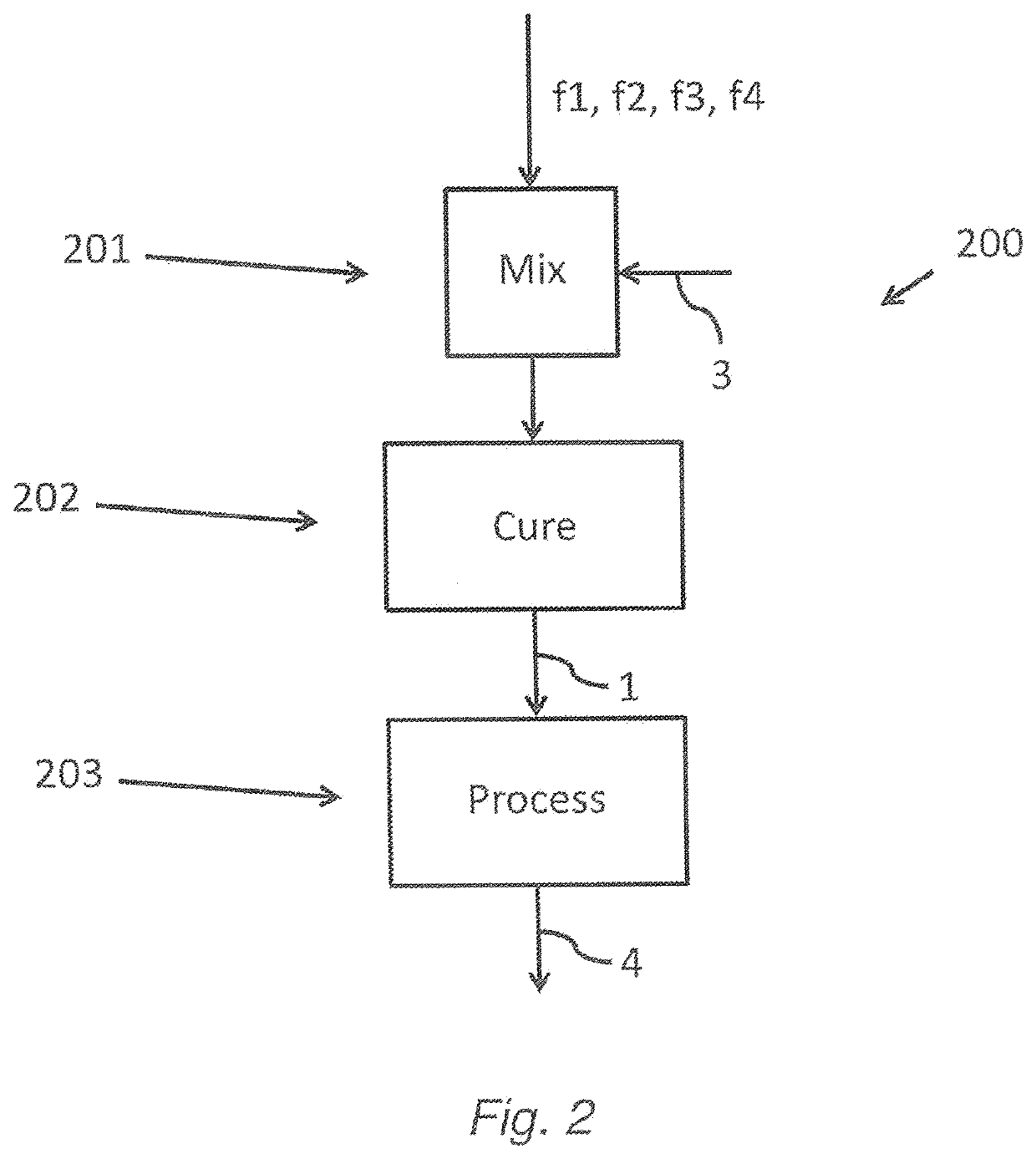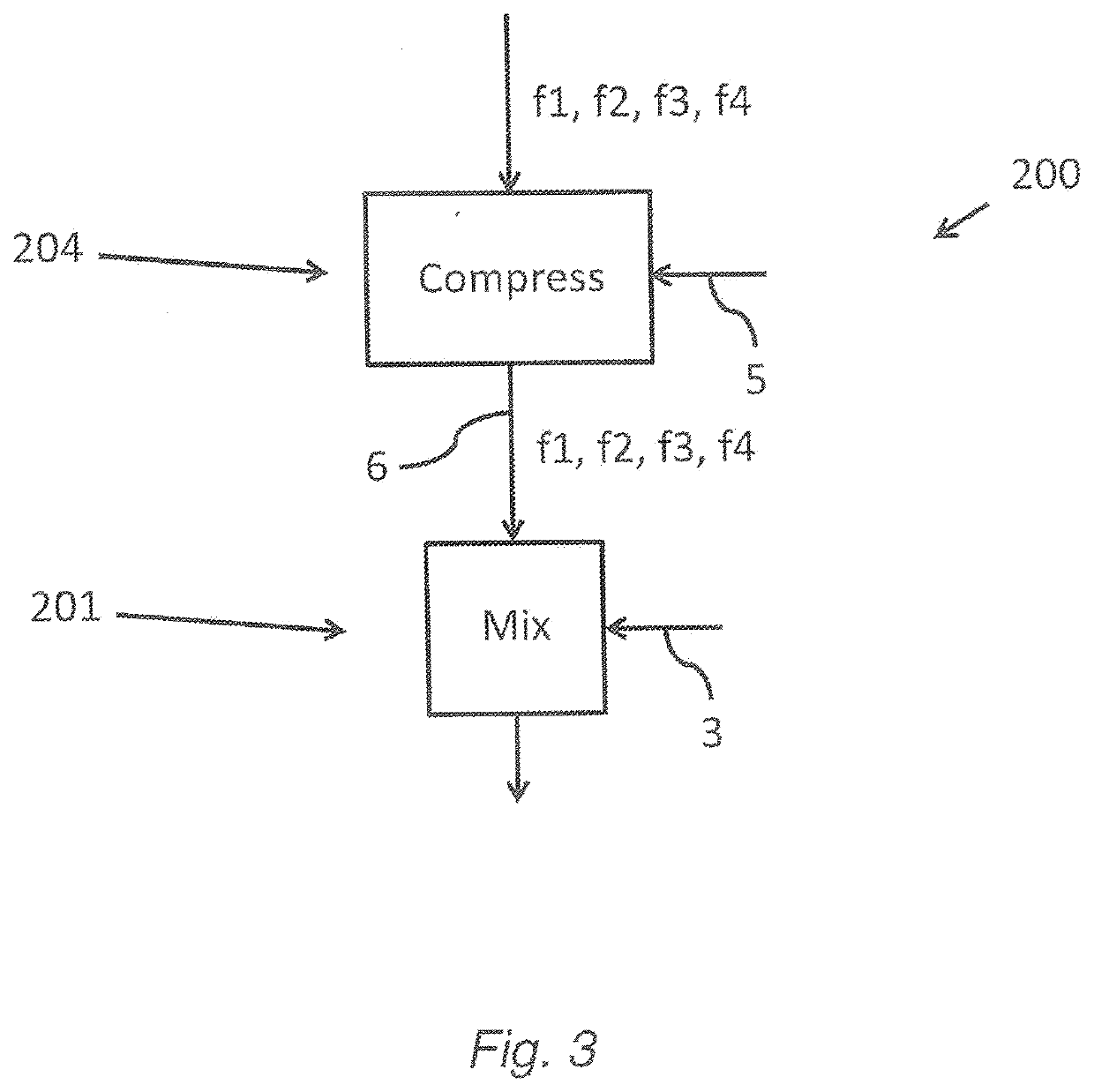Method for Processing a Mix of Lignocellulose Fibers for the Production of a Bio-Based Composite
- Summary
- Abstract
- Description
- Claims
- Application Information
AI Technical Summary
Benefits of technology
Problems solved by technology
Method used
Image
Examples
example 1
[0125]A miscanthus based mortar is prepared with the following process:
Weigh the Materials
[0126]1st minute: dry mixing of the powders[0127]2nd minute: add sands; dry mixing of sands with powders[0128]3rd minute: add 75% of required water and check if everything is mixing thoroughly[0129]4th minute: let the mix rest for 1 minute[0130]5th & 6th minute: add the superplasticizer+remaining 25% water and continue the slow mixing[0131]7th minute: add the dry fibers and continue the slow mixing[0132]8th & 9th minute: add the additional (2.5 g water per 1 gr fiber) and continue slow mixing (level 1)[0133]10th & 11th minute: increase the mixing speed to separate any clumping fibers.
[0134]Particle Size Distribution for Mortar Production
StandardCumulativeFractionAverageDeviationPercentagepercentagesizes(g)(g)(%)(%)Unsieved91.830.05—— 1.530.4523.1523 2-4 mm4.900.7555.10784-5.6 mm9.932.0014.84935.6-8 mm54.071.455.4899 >8 mm24.203.051.40100
example 2
[0135]A 3D printable concrete mixture is produced having different levels of fibers having a size below 1.5 mm
Pre-saturated fibresDry fibres specimensspecimensFreshAverageFreshAveragedensityslumpflowdensityslumpflowMixtures(kg / m3)(cm)(kg / m3)(cm)Reference 0%2237.1 ± 50 30.25 ± 0.52237.1 ± 50 30.25 ± 0.5Miscanthus 2%2102.2 ± 5028.25 ± 12084.4 ± 5028.75 ± 1Miscanthus 3%2100.4 ± 50 28 ± 0.52132.1 ± 5027.25 ± 1Miscanthus 4%2002.8 ± 5025.75 ± 12010.8 ± 50 26.5 ± 1Miscanthus 5%1864.3 ± 5024.75 ± 11891.2 ± 50 24 ± 1Miscanthus 9%1804.4 ± 50 12.5 ± 0.51770.7 ± 50 12 ± 0.5
[0136]The 3D printable concrete mixture is based on an MgO / aqueous MgCl2 mortar system. Magnesia cement, also called Sorell cement or Magnesia Oxychloride cement (MOC), is used, which is produced by mixing MgO with MgCl2 solution. A reaction takes place that forms magnesium chloride hydroxide hydrates:[0137]5Mg(OH)2-1MgCl2-8H2O 5-1-8 (normally forms first, metastable)[0138]3Mg(OH)2-1MgCl2-8H2O 3-1-8 (stable phase, normall...
example 3
[0153]Alternative Magnesium Oxide
[0154]In order to improve the early compressive strength of the magnesia cement for 3D printing, highly reactive magnesium oxide was tested. A mix consisting of pure magnesia cement without Miscanthus is used for this purpose. The composition of these mixes is as follows: 250 g MgO and 150 ml MgCl2 solution with the same concentration as described previously. However the MgO was so reactive that an extreme heat development was observed to the point that the material became too hot to touch and cracks appeared. For this reason a new approach was decided. The low reactivity MgO used in the previous mixes was only partially replaced (10 and 20 wt. %) with the highly reactive MgO and the influence on spread flow and setting time measured.
[0155]From the results below it can be seen that the partial replacement with highly reactive MgO decreases the setting begin by up to 40% and reduces the heat produced during setting and hydration. This makes the materi...
PUM
| Property | Measurement | Unit |
|---|---|---|
| Temperature | aaaaa | aaaaa |
| Temperature | aaaaa | aaaaa |
| Length | aaaaa | aaaaa |
Abstract
Description
Claims
Application Information
 Login to View More
Login to View More - R&D
- Intellectual Property
- Life Sciences
- Materials
- Tech Scout
- Unparalleled Data Quality
- Higher Quality Content
- 60% Fewer Hallucinations
Browse by: Latest US Patents, China's latest patents, Technical Efficacy Thesaurus, Application Domain, Technology Topic, Popular Technical Reports.
© 2025 PatSnap. All rights reserved.Legal|Privacy policy|Modern Slavery Act Transparency Statement|Sitemap|About US| Contact US: help@patsnap.com



